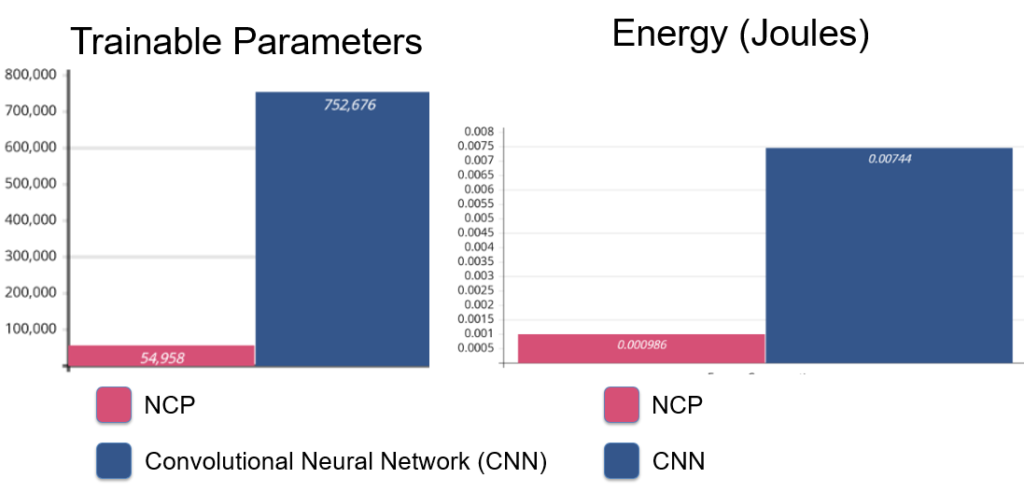
Validating Neural Circuit Policies For fNIRS Brain Signal Classification
As brain-computer interfaces (BCI) advance and become widespread, the demand for low-energy accurate algorithms increases. Presently, high-energy deep learning (DL) is successfully applied to brain signal classification but faces difficulty with noisy data or when generalizing to different users. Is there a low-energy model that can achieve competitive accuracy, noise robustness, and generalization?
An interesting candidate is Neural Circuit Policies (NCP): a novel low-cost DL model inspired by the architecture of the C. elegans nematode’s nervous system. NCP consumes less energy and is far smaller than standard DL models but has been shown to be remarkably capable at time-series applications.

Process and Results
To validate this for BCI, we constructed a NCP and Convolutional Neural Network (CNN) model for comparison. Using brain signal data collected by fNIRS from Tufts University, we performed a 10-fold cross validation to determine each model’s accuracy on the shuffled dataset.
We then perturbed the data with noise and recorded the declining accuracy of both models. Finally, to determine generalization, each model was trained on a subsection of the entire dataset and then tested on the entire whole to determine the accuracy for unseen subjects. NCP achieved a 96% accuracy rate and showed competitive noise robustness and generalization with the CNN model. Therefore, NCP seems to be a low-cost competitive alternative to standard DL models, reducing the energy requirement for BCI.
All code used is at this GitHub!




